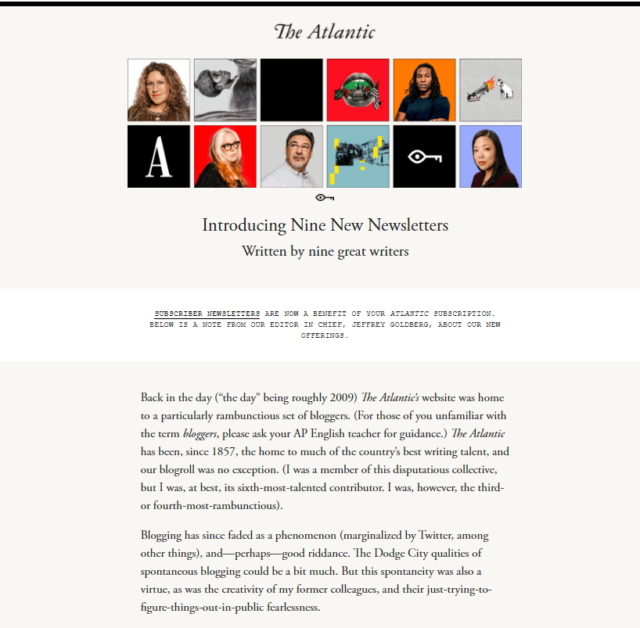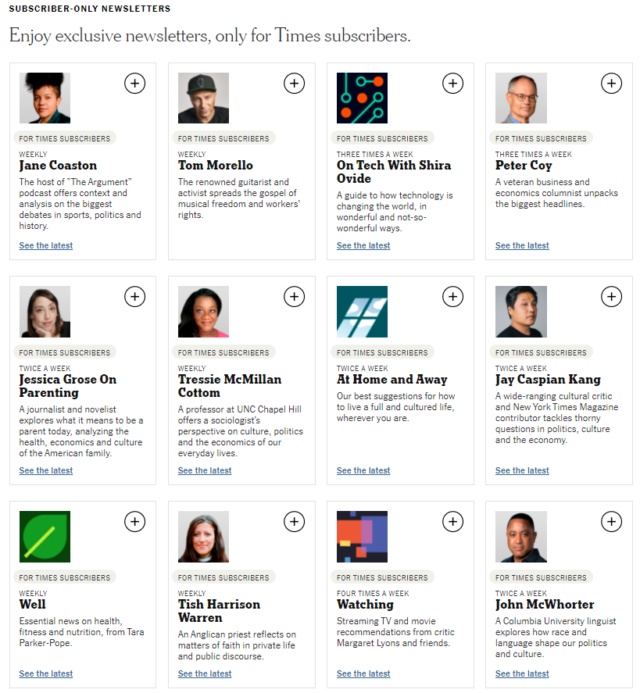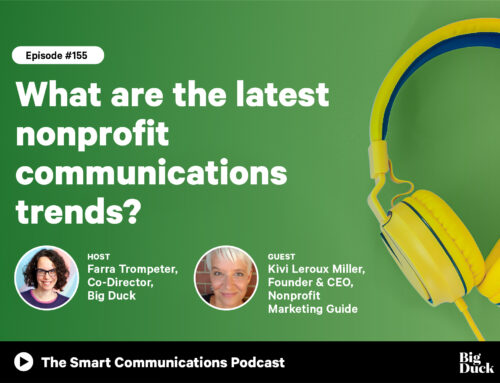Nonprofits have been doing newsletters forever, whether in print or via email. And for just as long, the communications staff in charge of them have been either taking a deep sigh or full-out eye-rolling in response to questions about why they exist. It’s just one of those things people do, even if they are not sure why.
At various times, some in the nonprofit sector have suggested that the newsletter format needs to die and that emails in particular should be about one thing and one thing only. Some subject line analyses have suggested that words like “Update” and even just plain “News” are better in the subject line than the boring ol’ “newsletter.”
So, within this context, I’ve been fascinated to see mainstream media organizations like The Atlantic and the New York Times embrace the newsletter concept. For example, look at how The Atlantic is positioning their newsletters: They claim that newsletters are the new blogging.
Also, many noteworthy writers are starting paid newsletter subscriptions using services like Substack. This may be more of a reflection on the transformations taking place in journalism than on the value of newsletters as a way to deliver content.
But the fact remains: Newsletters are having a moment.


Here are some interesting notes about this newsletter resurgence . . .
- The newsletters are written by one author who is clearly named and has control over the content. They often write in the first person (I. me) but even when they don’t and do more factual reporting instead, the voice of the writer is still clear.
- They cover specific topics or angles or perspectives. They have a beat, in journalism lingo. This matches the larger trends of media being customizable and on-demand.
- Most editions of the newsletter is about one thing — it’s essentially what you’d think of as one opinion column or blog post. Some write more “news round-up” style, but that seems to be a minority.
- They are published at least weekly.
- They are often positioned as exclusive content, such as for paid subscribers only.
What does this mean for your nonprofit? Maybe nothing. Or it could mean that you might . . .
- Consider producing multiple newsletters that would be of interest to specific segments, where you are playing the publisher role of multiple newsletters?
- Give your newsletter writers more leeway in expressing their own voices and ownership of the message?
- Have something so interesting and compelling to say that people might pay for it?
I’d love to hear what you think!






